ScaleTrains GE ET44 Canadian National Heritage Series
Published: 2023-10-01 - By: CNW400
Last updated on: 2023-08-30
Last updated on: 2023-08-30
visibility: Public - Headline
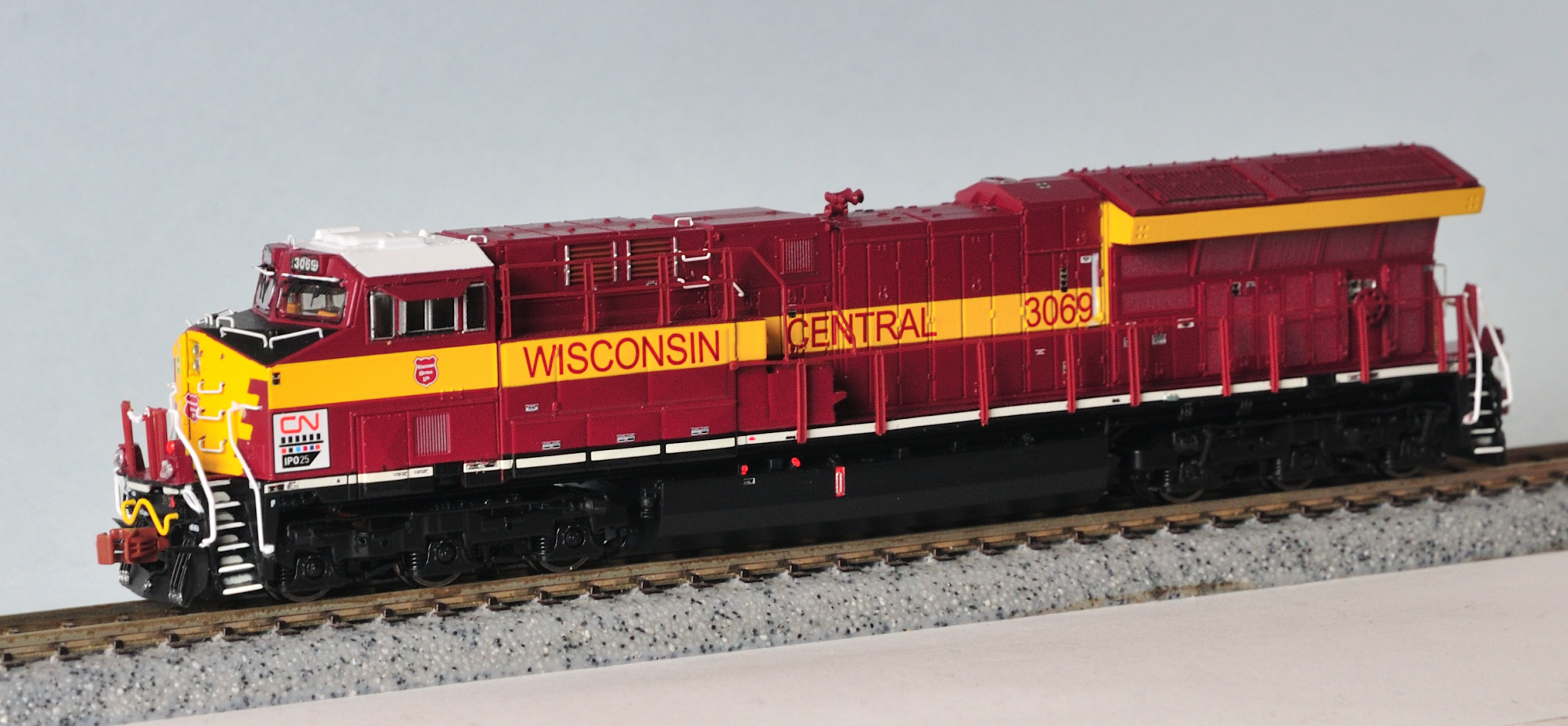
Introduction
November 17, 1995 – the oldest and largest Crown Corporation in Canada went public. The Canadian National Railway Company made C$2.25 billion shares available to investors. To date, it is the greatest IPO (initial public offering) in Canadian history. In celebration for the anniversary of its IPO and continuing expansion across North America – Canadian National unveiled, twenty-five years to the date in 2020, a series of freshly decorated locomotives commemorating the company’s growth.During that quarter century, Canadian National (CN) acquired controlling interests of the Illinois Central Railroad (1999), Wisconsin Central LTD (2001), BC Rail (2004), and Elgin, Joliet, and Eastern Railway (2013). All four railroads and the Grand Trunk Western (a subsidiary since 1971) were represented on a special series of heritage locomotives. Each engine was painted in their original road colors with a 25th anniversary IPO placard.
What is a heritage locomotive? The summary found on Wikipedia explains it well: “A heritage unit or commemorative locomotive is a railroad locomotive painted in an honorary paint scheme; usually the paint scheme is that of a now-defunct railroad that merged with or was acquired by the locomotive's owner.” - (https://en.wikipedia.org/wiki/Heritage_unit)
Prototype History
The Enviromental Protection Agency (EPA) introduced in 1998 a tier-based policy to regulate locomotive exhaust emissions. The policy instituted standards for carbon monoxide (CO), nitrogen oxides (NOX), hydrocarbons (HC), particulate matter (PM), and smoke emissions for newly manufactured or remanufactured locomotives that were constructed after 1972. The tier system is based on the date the locomotive was manufactured with the most stringent levels for newer locomotives. Once Tier 4 standards were fully implemented in 2015, the EPA estimated that railroads reduced diesel particulate matter emissions by 90% and nitrogen oxide emissions by 80% when compared to Tier 2 locomotive pollution levels. Similar standards were placed on diesel trucks, buses, and industrial equipment.
Some methods for reducing dangerous emission levels included the introduction of Ultra-Low Sulfur Diesel (ULSD) fuel with a sulfur content of 15 ppm (parts per million) starting in June 2012. Furthermore, locomotives are required to use exhaust gas after-treatment components such as catalytic converters and particulate filters. Lastly, railroads are mandated to create company idling policies to eliminate unnecessary air pollution.
General Electric introduced the ‘Evolution Series’ in 2002 to replace their popular Dash 9 locomotive to meet the demands of the new Tier II emission standards. General Electric test locomotive #2005, a GE ES44AC, was produced in February of that year with full-blown GEVO manufacturing commencing in December 2002. The Evolution Series has become one of the best-selling locomotive groups of all-time. What is in a name? Decoding the meaning behind the production model names is not as daunting as it appears. As an example: GEVO and GE ES44AC
- GEVO: General Electric Evolution
- GE ES: General Electric Evolution Series 44: 4,400 Horsepower
- AC: AC Motor Traction System
- GE ET: General Electric Evolution Tier
- DC: DC Motor Traction System
In 2019, General Electric sold their Transportation Division to Wabtec Corporation of Pittsburgh, Pennsylvania. Wabtec was founded in 1999 with the merger of the Westinghouse Air Brake Company and MotivePower Industries Corporation. Wabtec has been producing the Tier IV Evolution Series locomotives since their purchase in 2019. (www.wabteccorp.com)
Road Names and Pricing
On January 5, 2023, ScaleTrains issued the long-awaited Canadian National General Electric ET44 GEVO Heritage series units. Four of the five Canadian National heritage engines were represented as well as two tribute units expressing gratitude to military veterans from Canada and the United States.- BC Rail - #3115
- Elgin, Joliet & Eastern - #3023
- Illinois Central - #3008
- Wisconsin Central - #3069
- Veterans Commemorative - #3015 & #3233
The Model
The ScaleTrains GE Tier 4 GEVO locomotive arrived in a red and white cardboard box that measured 8.5” x 3.5 x 1.5”. The model information is clearly labeled on the end of the box, along with model image, for ease to locate when in storage. Useful product information is also printed on the bottom panel. Within the box the Heritage locomotive was wrapped inside a clear plastic clamshell with foam cushion walls supporting the case. A thin plastic sheet was cloaked around the model and foam strips were wedged between the body shell and handrails to protect the delicate parts. Lastly, a four-page Operator’s Manual is included with maintenance and user instructions. Once again – I love the overall presentation and packaging – but I am not fond of the clamshell.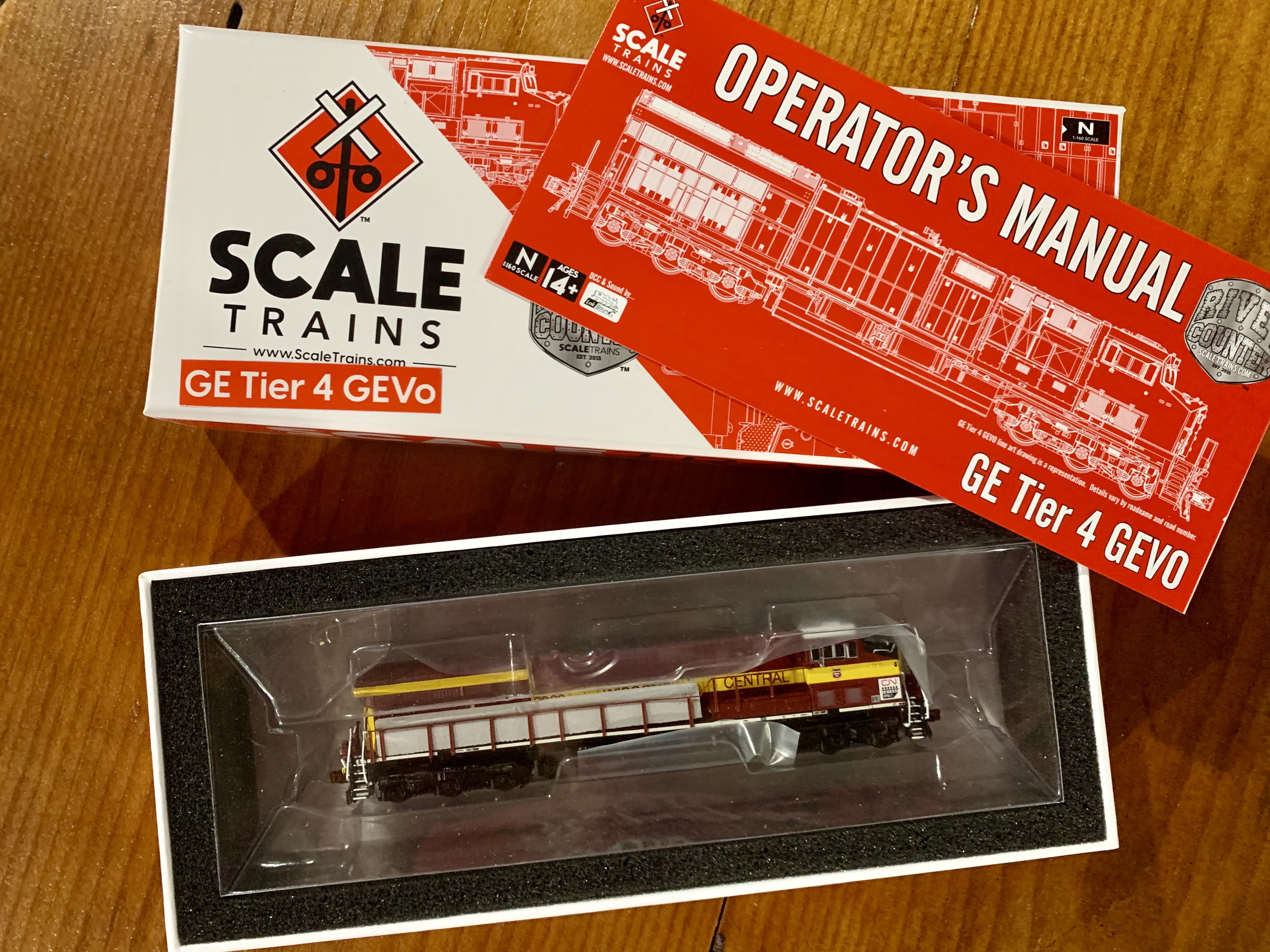
The ScaleTrains GE Tier 4 GEVO Heritage Series locomotives are part of their N Scale Rivet Counter collection. Highly researched models with a plethora of separately hand-applied parts and meticulous attention to detail. Rivet Counter models have such an intricate composition I cannot list all the frills. I will only emphasize some of the more prominent features.
The nose of the Canadian National ET44AC Heritage Unit #3069 proudly features the Wisconsin Central LTD shield logo along with the green Canadian Transportation Safety Board badge. Affixed to the cabin door, the symbol denotes that First-Aid equipment is aboard in case of emergency. Separately applied wire grab irons (I was missing one right out-of-the-box), handrails, and cut-levers. Appealing safety chain, platform light (hole below logo), snowplow, and 3-hose MU cluster with silver tips detail. The walkway deck is supplied with a front anti-climber... an extension over the front coupler to prevent equipment telescoping into the cab space during a collision and prevent track debris from flying upwards toward the windshield.
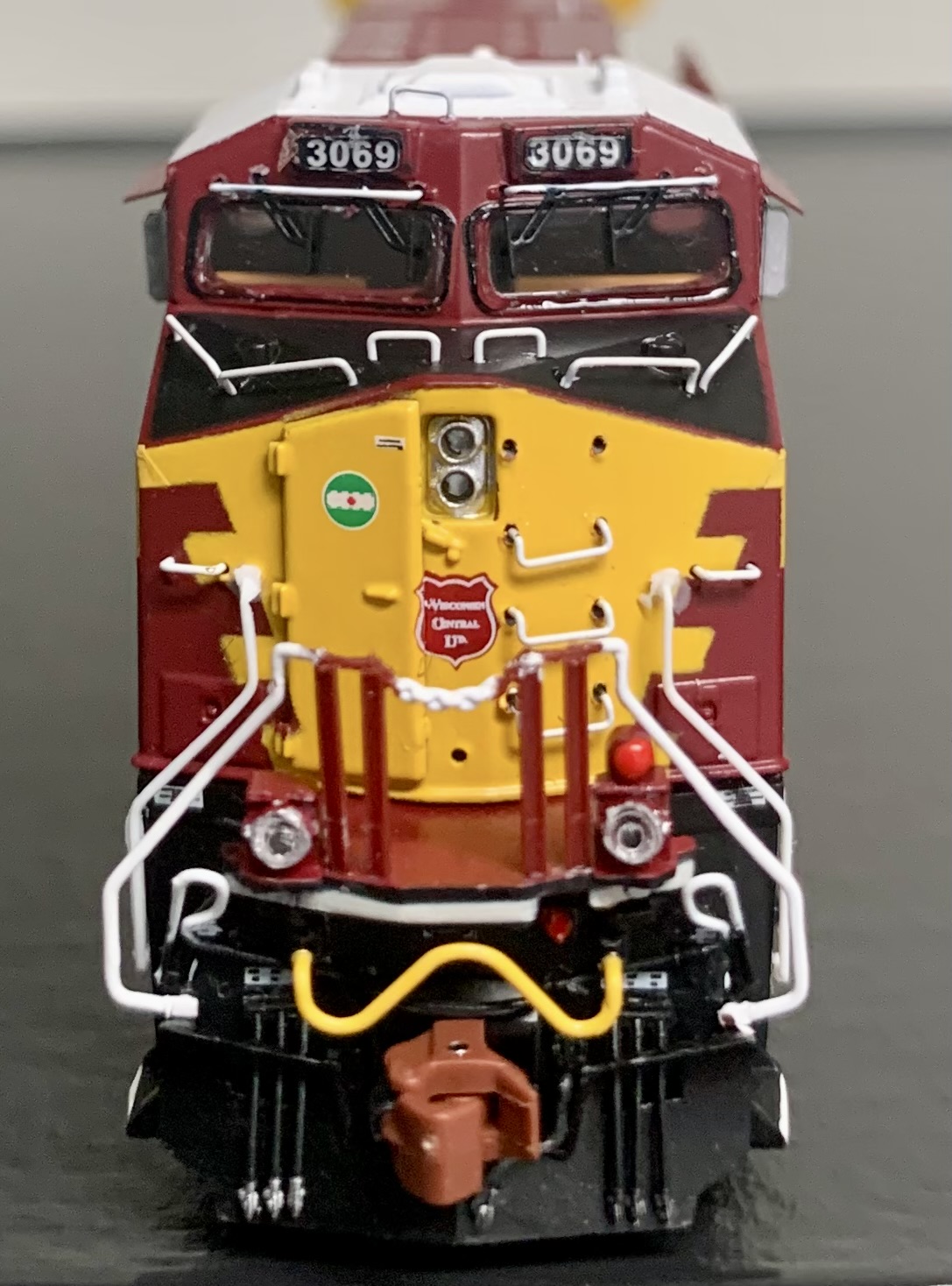
Furthermore, the front is equipped with directional LED dual headlights, illuminated number boards, deck mounted LED ditch lights and a Canadian National specific red DPU marker light (non-operational on model). Mounted directly above the ditch light, the marker is used when the locomotive is the last piece of equipment during a movement – an end-of-train signal similar to a FRED (flashing rear-end device).
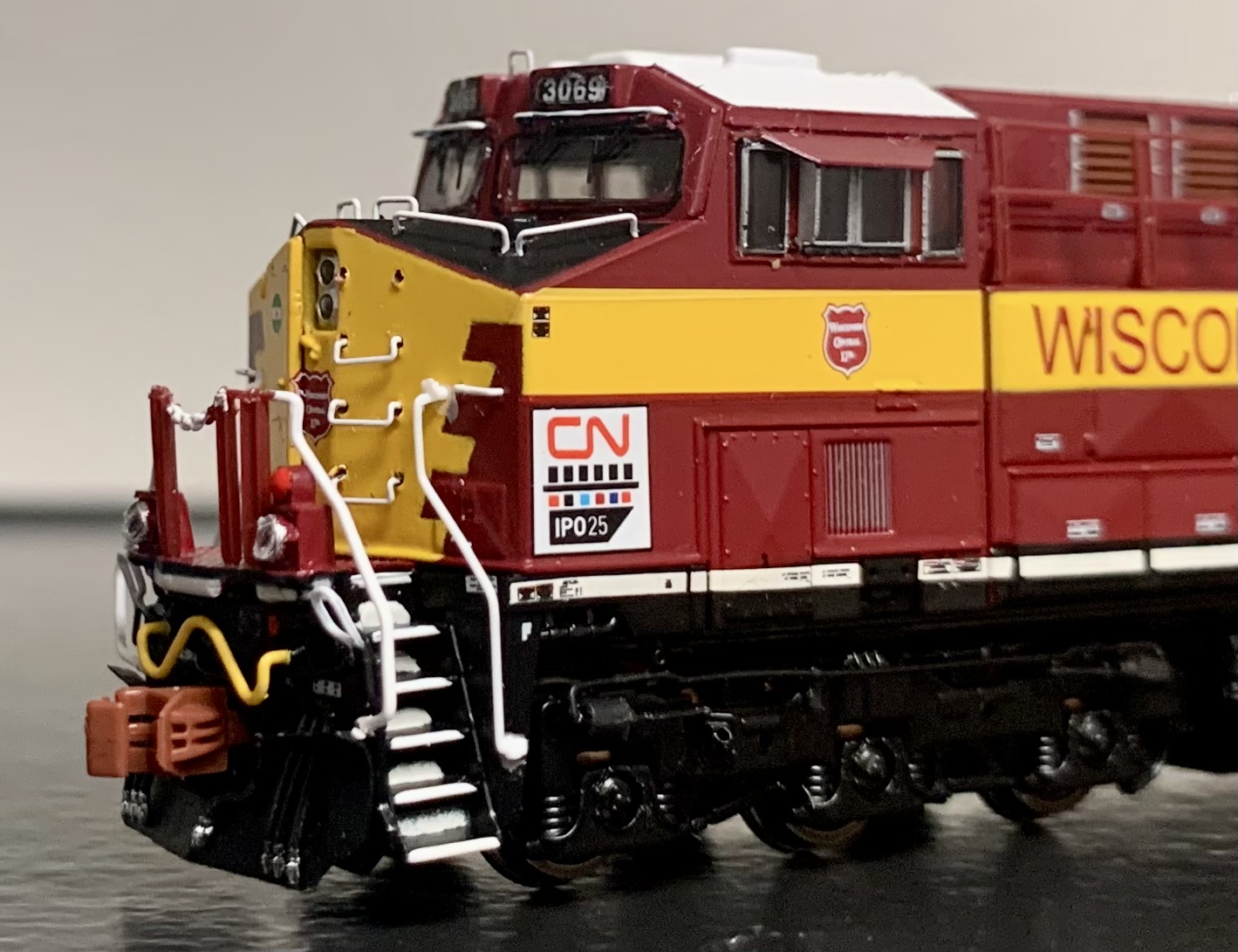
Moving-up to the anti-glare black hood, we discover more wire grab irons with sand-filling hatches. Windshield wipers and detailed cab with seat and control stand complete our tour. You will notice some flashing debris or glue along the number boards and grab irons.
The side view fully illustrates the beautiful ‘tru color paint’ technology utilized by ScaleTrains to perfectly match the Wisconsin Central maroon and yellow road colors with white cab roof and safety reflective stripes along the sills of the stairs and walkways. The paint job is crisp and even along the entire model. The Canadian National IPO 25th anniversary placard is also represented. The crew is treated with tinted side windows and prototype correct sunshades.

The right side of the locomotive exhibits dynamic brake cab grills and brake wheel. Walkways feature anti-slip grate patterns and fuel tank displays red emergency shut-off valves. An ‘e-bell’ or electronic bell is mounted in front of the fuel tank immediately after the front wheel sets.
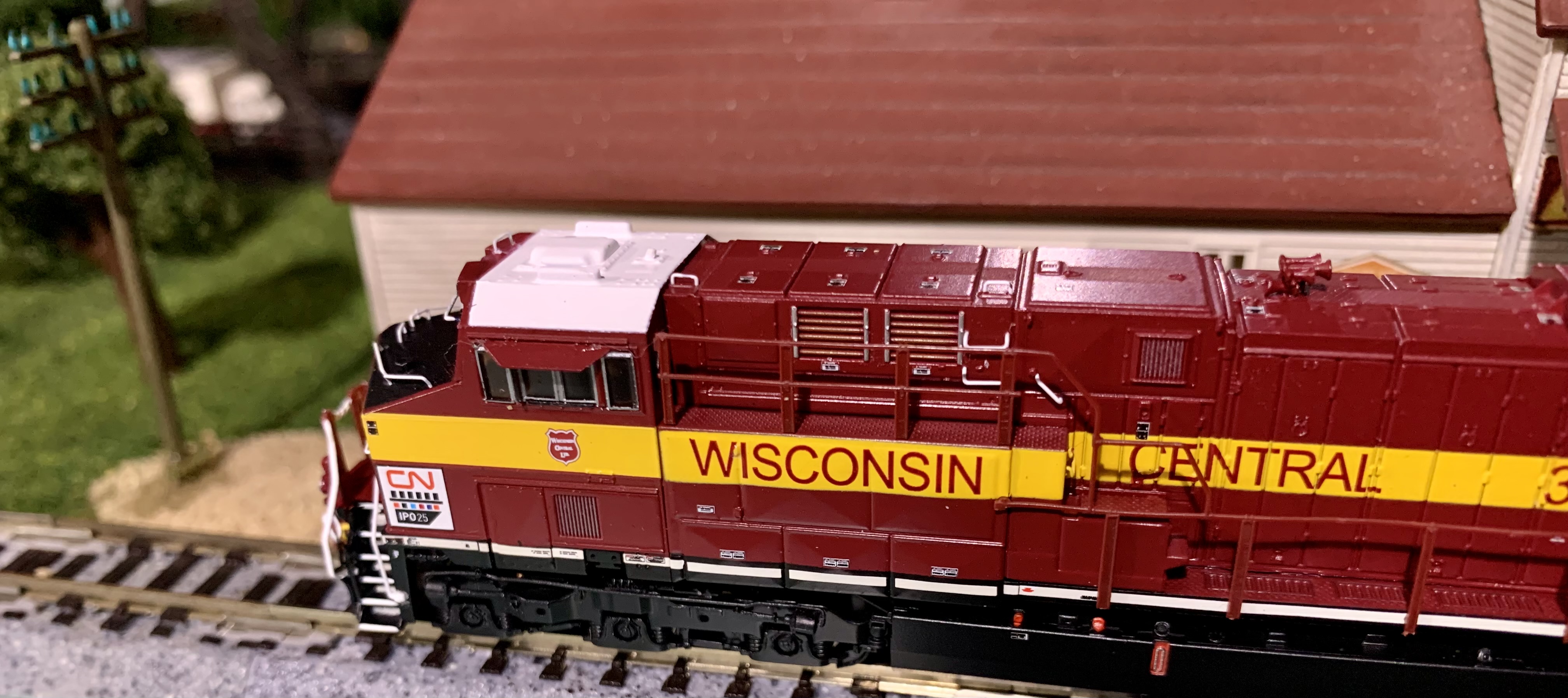
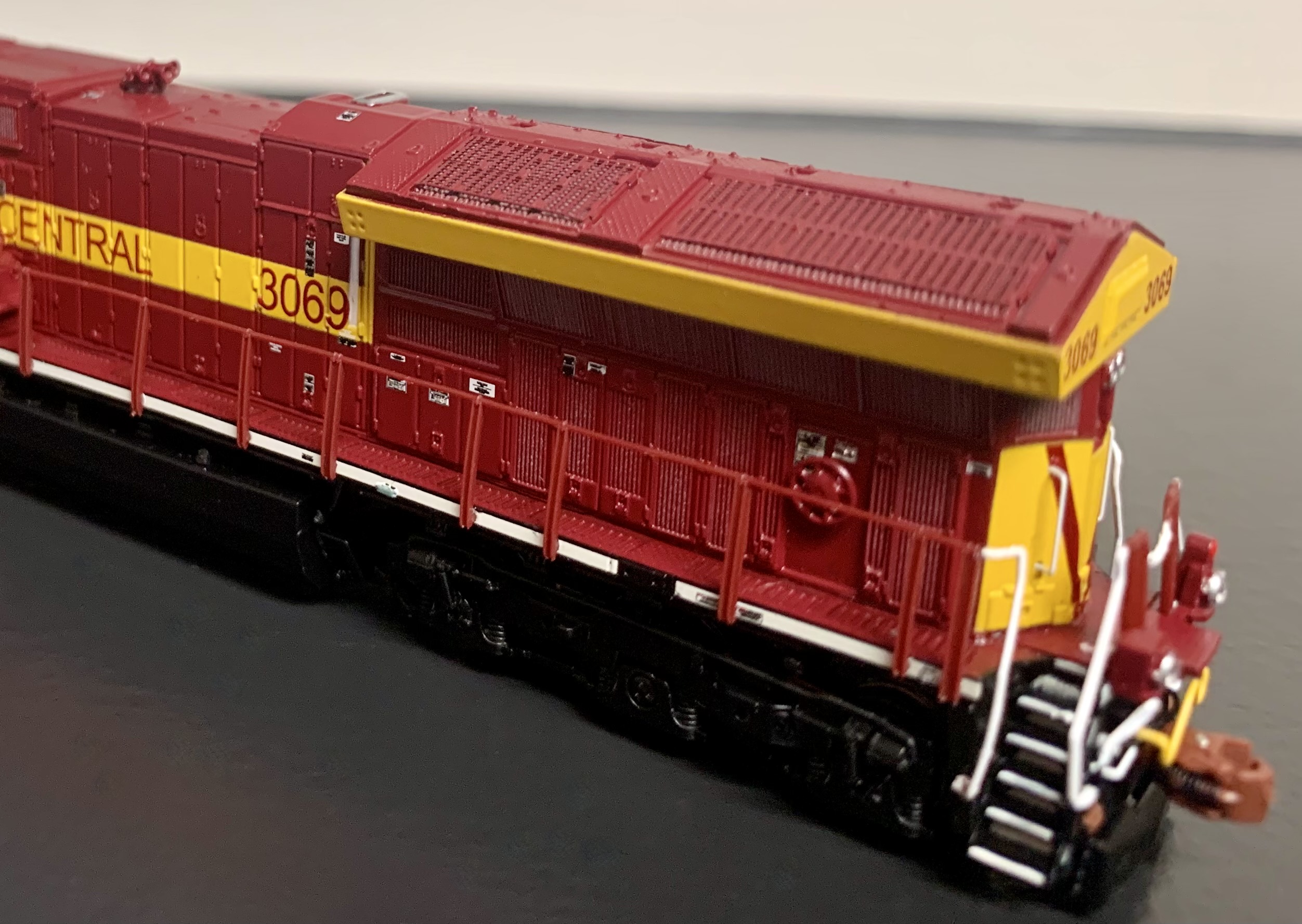
Left side highlights include battery box access, fan grills, extremely sharp panel seams, and twin fuel tanks with separately applied plumbing and cabling. Unlike the HO version, the grills and fan covers are NOT see-thru on the N scale model.
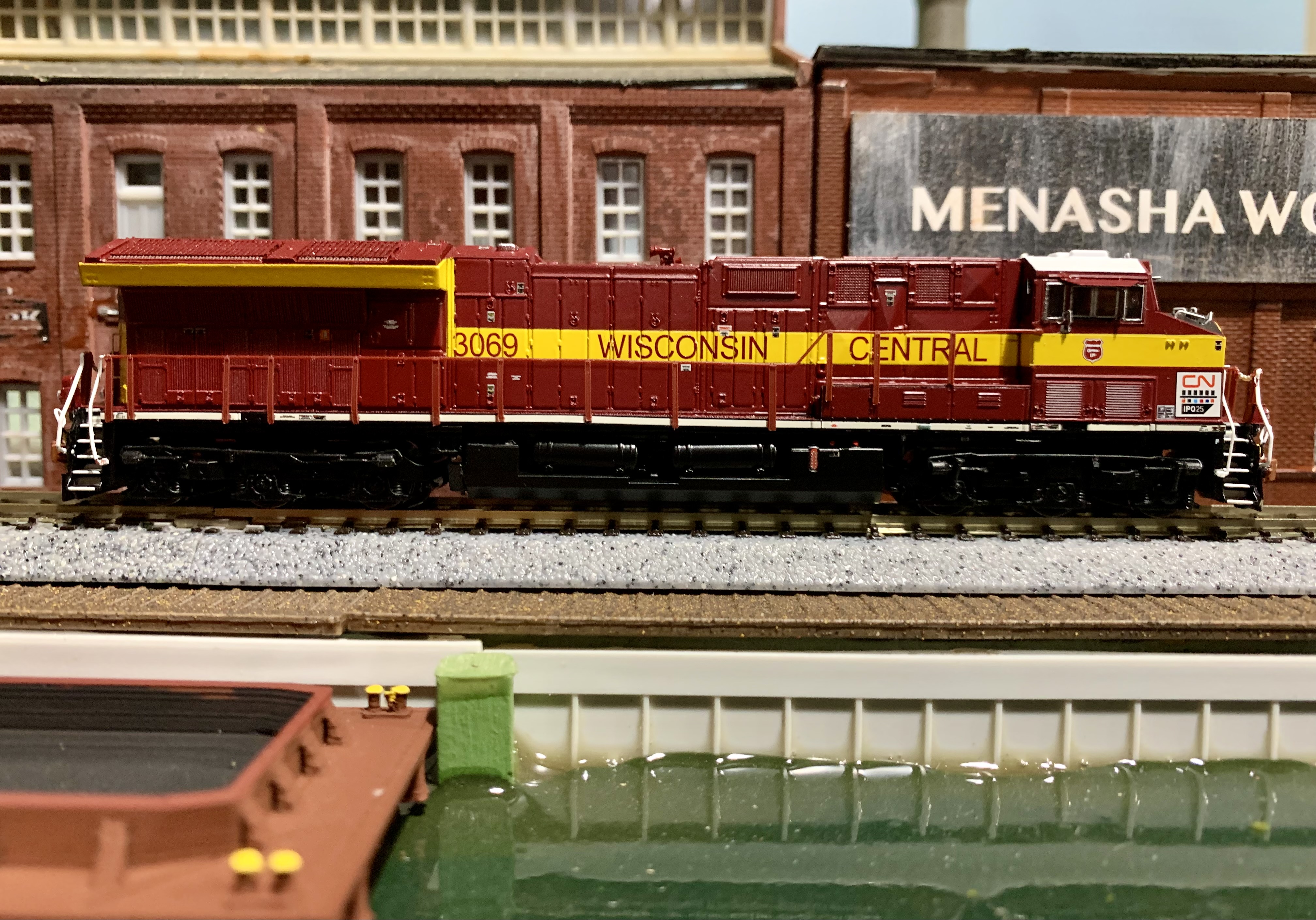
Atop we find a cab roof square antenna housing with PTC (positive train control) array, Nathan AirChime horn, post-2016 angled exhaust configuration, and large radiator fan grill composition.

The rear of the train features dual LED headlights that operate in reverse along with working ditch lights. A non-operational red DPU marker light is also present on the tail end together with wire handrails/grab irons, safety chain, platform light, MU hose cluster, and sharp grill detail. The road number is neat and in proper arrangement positioned near the top of each end.
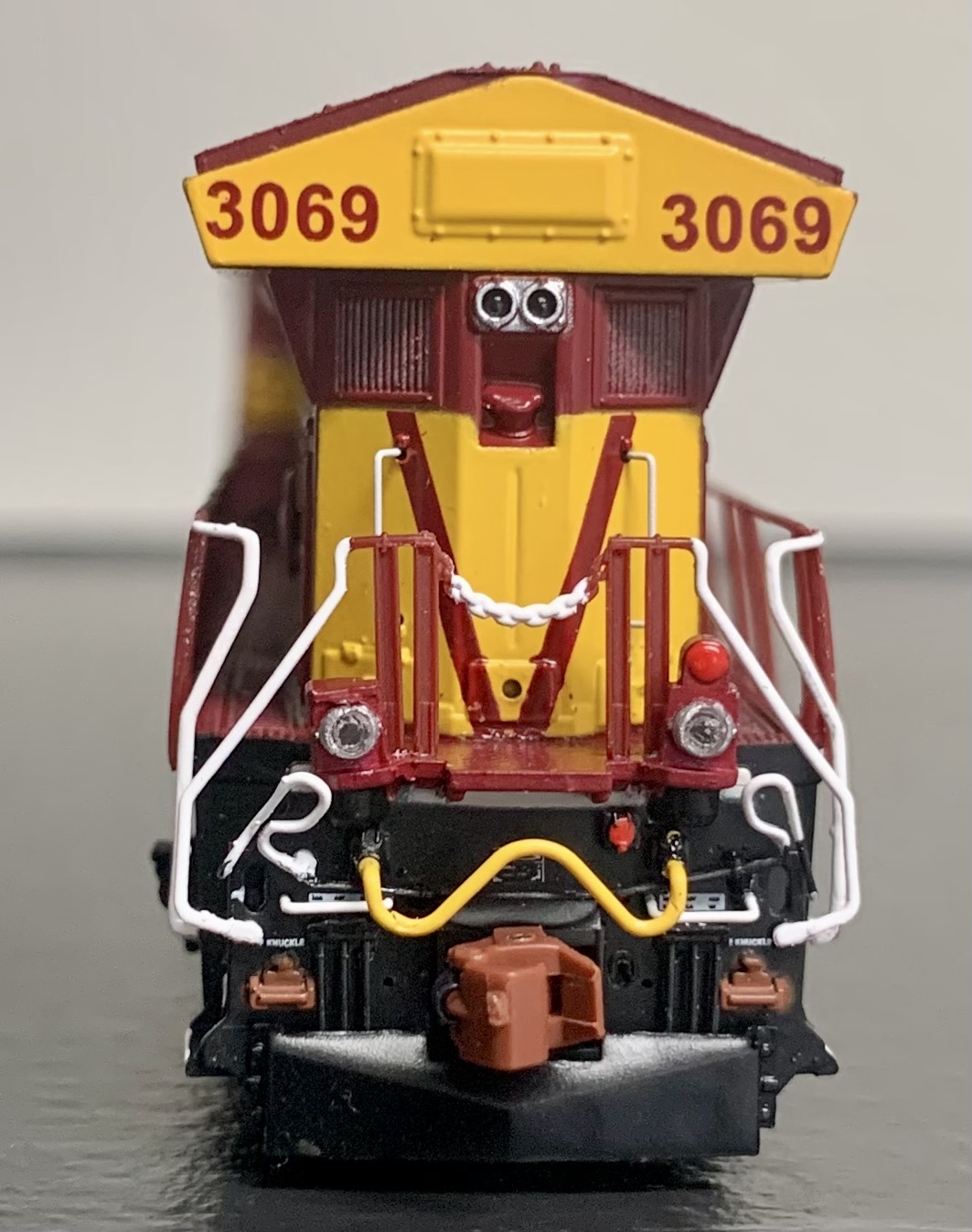
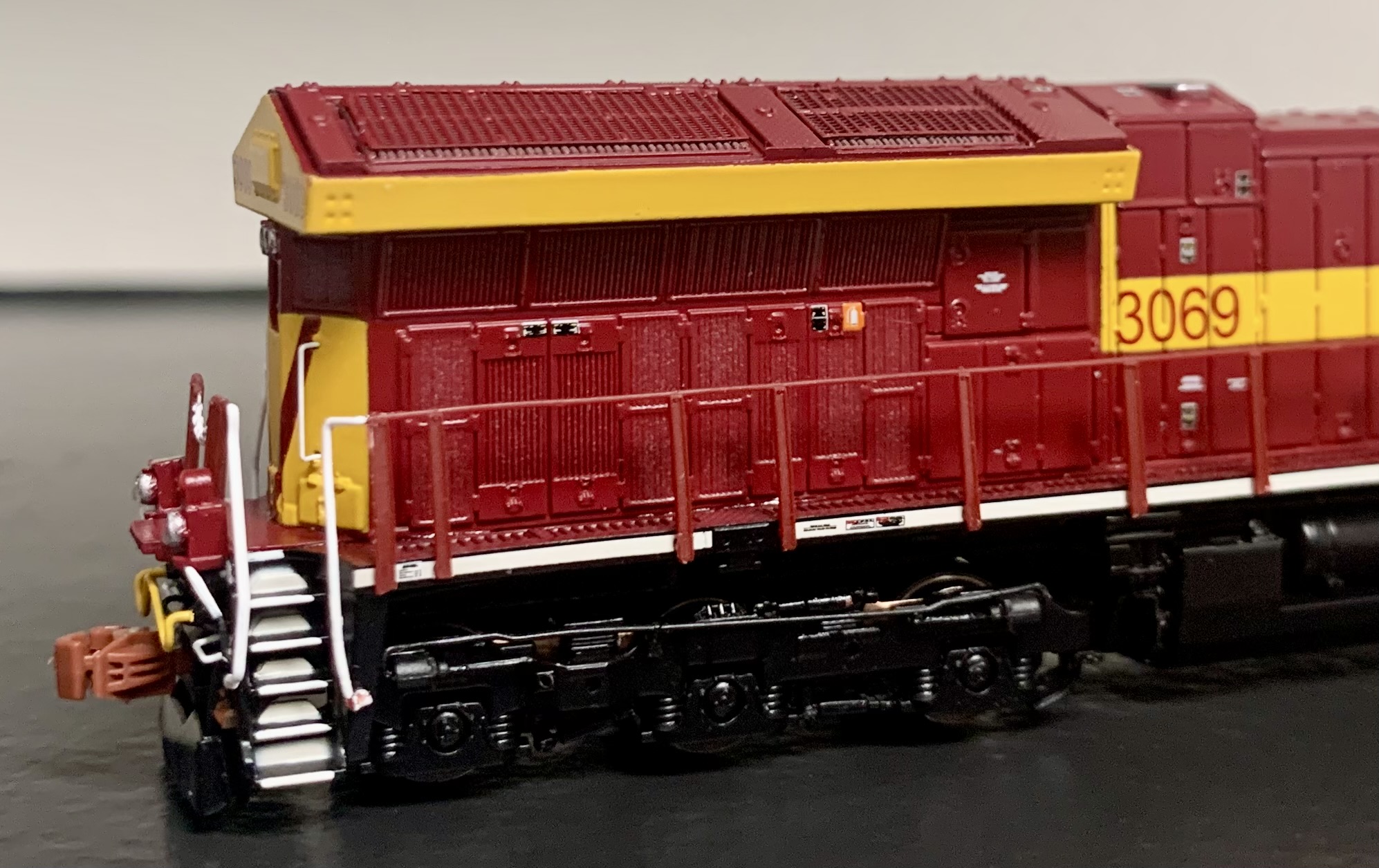
The underside of the locomotive reveals the cube speaker with installed ESU-LokSound 5 sound decoder with Full Throttle on DCC models. Life-like GEVO-12 prime mover sounds with auxiliary, bell, and horn functions. The DDC version operates on either DC or DCC systems – the DC Ready engine is fitted with a Next18 connector. The blackened metal electrical pick-up wheels run along General Electric Hi-Adhesion trucks. The engine feels nice and solid in your hands – weighing 3.90 ounces and measuring 5 ½ inches long.
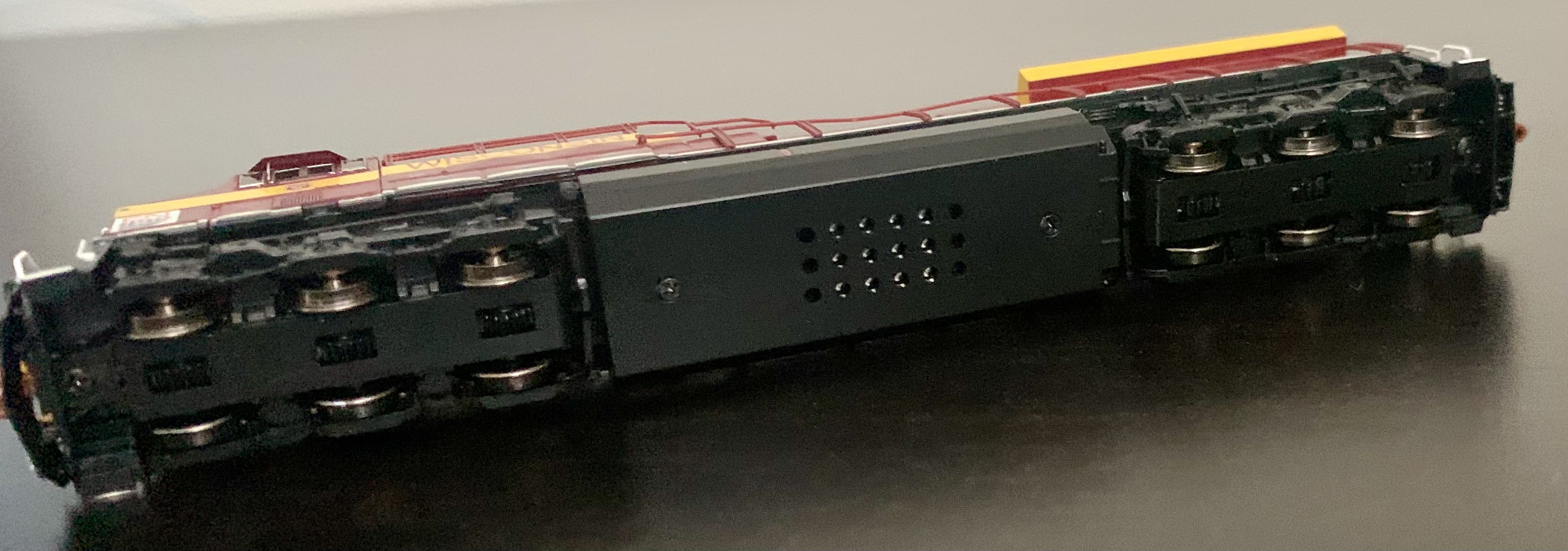

The locomotive is furnished with brown semi-scale Type E Micro-Trains Line compatible knuckle couplers. If you desire to replace the ScaleTrains couplers with a Micro-Trains product, Micro-Trains Line 1015/1016 couplers can be swapped without modification. Both body-mounted couplers were measured to the correct height, and I had no issues while running on Kato Unitrack at low and medium speeds around curves and through turnouts. The minimum recommended operating radius is 11” on Code 55 or 80 rail.
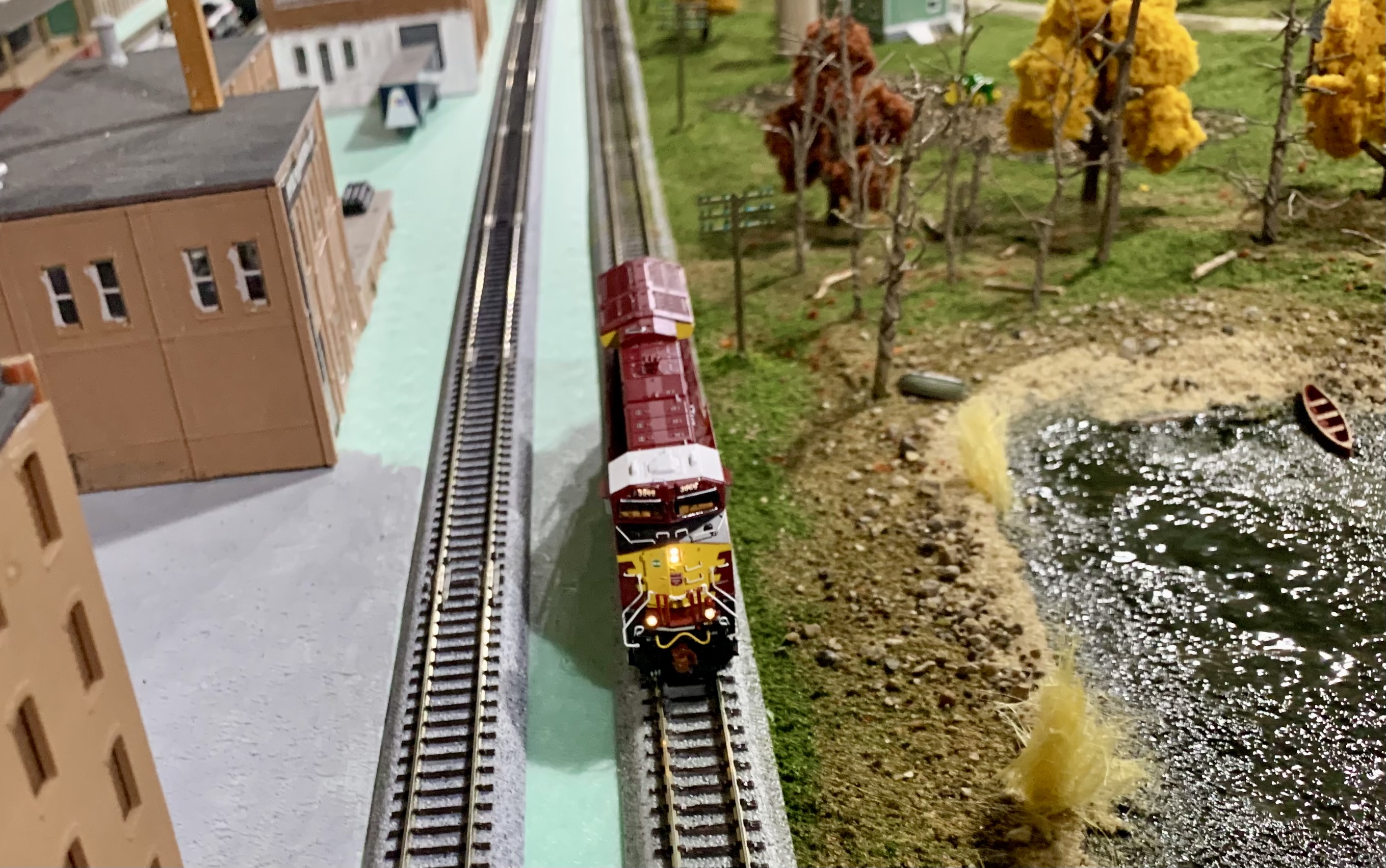
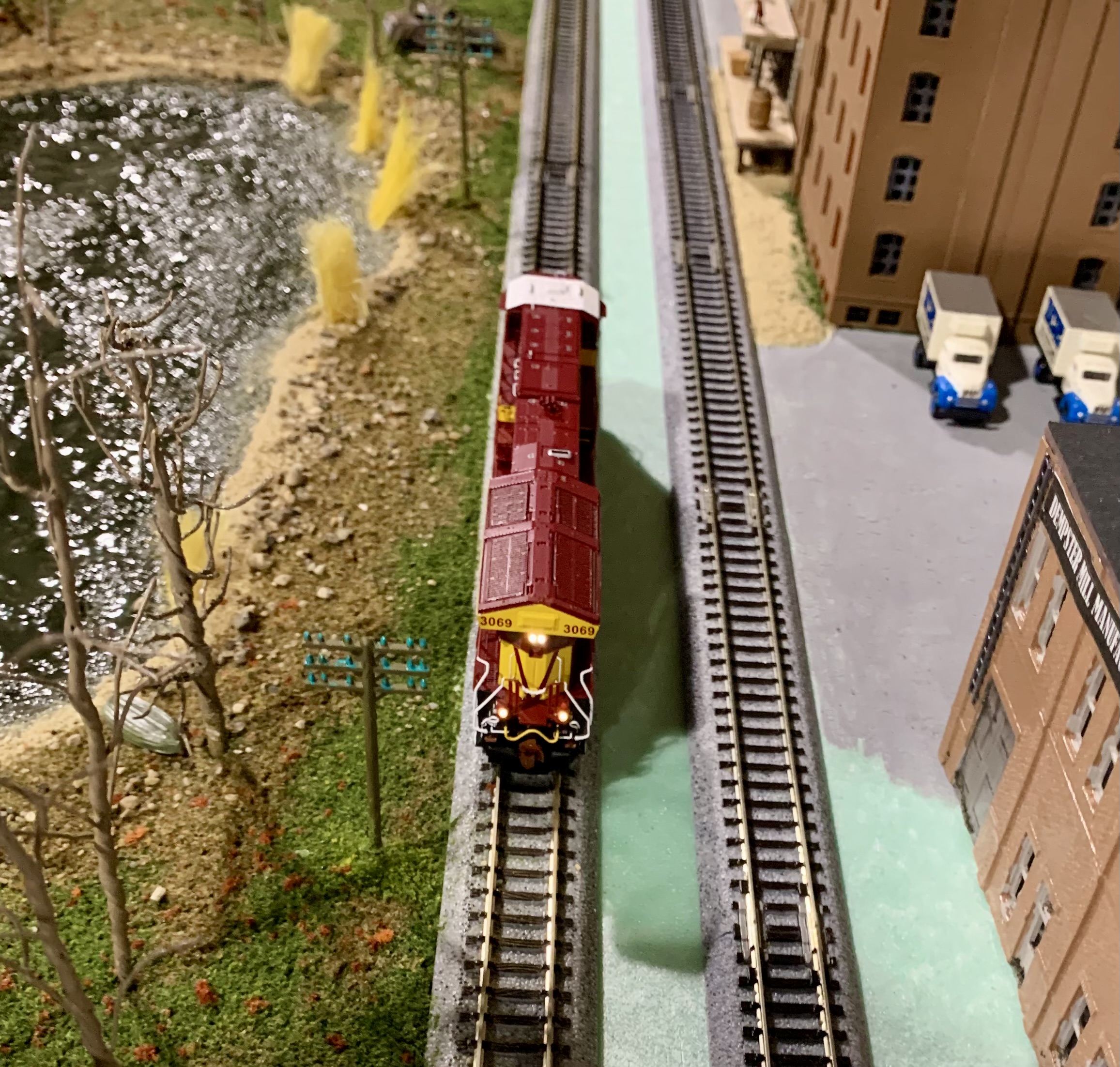
Conclusions
Another winner in the ScaleTrains family. A scrupulously researched and designed locomotive that is highly prototypical for N scale modeling. An abundance of high quality, sharp detail work with many parts and pieces hand-applied. A great running engine that needed no adjustments to run smoothly with its bold colors, bright lights, and genuine railroad sounds zipping around your layout. Admittedly there were a few issues that these old eyes would not notice without magnification, but the more discerning modeler would detect – missing grab iron, flashing bits, and crooked handrails. That aside – an absolutely beautiful model and highly accurate representation of the General Electric ET44AC GEVO Series Wisconsin Central Heritage locomotive.To see a list of all cars in this series, CLICK HERE

